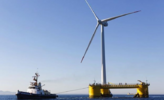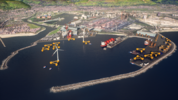Still some transport here from various factories to the shipping port in Esbjerg.
Actually driving around in Jutland, you will find many a round about or intersection have been modified to accommodate these huge transports.
Here will probably also need to be some on land issues, CUZ all the old land based turbines here, well the plan is to replace them with larger ones, though of course not in a 1:1 scale.
Needless to say people that live close to the small turbines are not happy about that.
And so i think this is where we need politicians to step in, and do what common people can not do them self,,,,,,,, though i doubt that will happen, it would be a rare thing if that happen.
Then again not that many live right next to wind turbines so it will not be that many voters a political party will burn, so with the after all big focus on going green here from both people and politicians, it will probably happen.
They ( politicians ) also need to do something about the law on this area CUZ are a mess.
For instance:
Not far from where i live a little town have a little industrial area, all the companies there have talked, and agreed on putting solar cells on all of their roofs.
BUT ! Due to the law they can not do that,,,,,,, which is just insane when you beat your chest being / thinking you are all that green.
In many way i feel Denmark are like Russia and China, just in a far more complex way so no one can see thru the BS.
Same when we always top the least corrupt nations rankings,,,,, thats just BS we just have many other names for it, and do it just fine.



